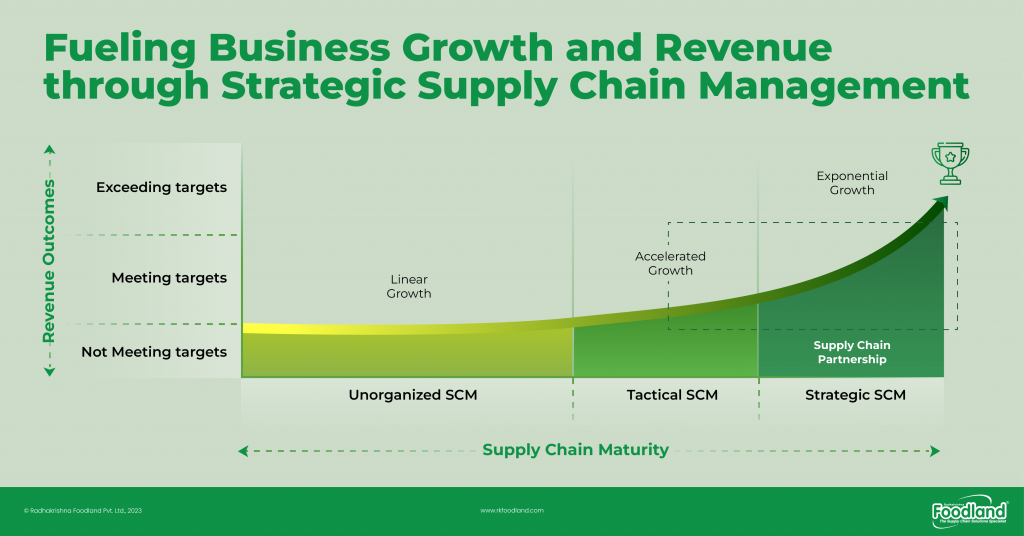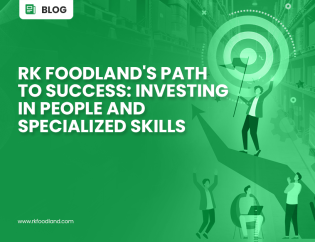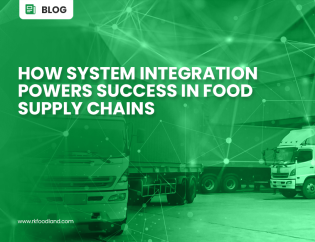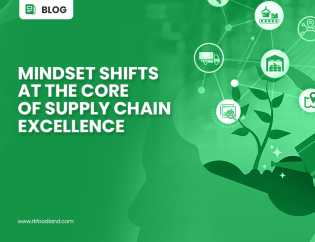
[Avg. Read Time < 5 mins]
In today’s fast-paced and technology-driven marketplace, businesses across all industries share the goal of achieving supply chain excellence. However, many struggle to attain this objective due to a lack of understanding of importance of systems-level approach and proper planning. For food businesses, this challenge is compounded by ever-changing consumer demands, increasing competition, shorter product lifecycles, stringent regulatory compliance, and narrowing margins. In order to thrive in this challenging business environment, businesses often resort to the traditional approach of scrutinizing functions in silos to identify areas for cost reduction, without considering the potential impacts on overall business outcomes. However, this approach may not be suitable for all businesses and may not always yield successful outcomes. In today’s hyper competitive marketplace, it is imperative for food businesses to adopt an ecosystem perspective enabling them to take decisions that balances short-term situational needs with long-term continuity. For this, achieving supply chain maturity is critical, and requires a strategic approach that prioritizes partnerships, risk management, and data management capabilities. Such a transformation requires a significant shift in mindset, as well as investment in technology and talent in a structured manner.
This blog outlines the maturity curve, details the key characteristics of each maturity level, and offers strategies for advancing up the curve.
Supply Chain Maturity Curve – A Barometer for Measuring Optimization and Efficiency
The Supply Chain Maturity Curve serves as a framework for assessing the level of optimization and efficiency in a business’ supply chain operations. By evaluating key areas such as planning, sourcing, manufacturing, logistics and customer service, the maturity curve helps organizations identify gaps and to develop strategies for improvement. Ultimately, the curve serves as a guide for companies to enhance their supply chain operations and overall performance, levelling up the curve.

The journey through the maturity curve comprises of three main tiers, namely the Unorganized level, the Transactional level, and the Strategic level.
The unorganized level – of supply chain maturity is characterized by informal and reactive processes, a lack of coordination and collaboration, ineffective data utilization, and a focus on short-term gains.
The transactional level – of supply chain maturity is more formalized and standardized, with a primary focus on transactions and limited collaboration or risk management. Technology is used to optimize individual processes rather than the supply chain as a whole, and data is used for operational decision-making rather than strategic planning.
The strategic level – of supply chain maturity is highly integrated and collaborative, with a focus on long-term sustainability and resilience. Risk management is a key priority, and mitigation plans are developed and regularly reviewed. Technology is used to optimize the entire supply chain, with a focus on data-driven decision-making. There is a strong emphasis on strategic planning and continuous improvement to drive competitive advantage and improve overall performance.
Benefits of Progressing on the Supply Chain Maturity Curve
Moving up the supply chain maturity curve from a transactional to a strategic level provides several advantages to a company.
- It enables revenue growth through improved supply chain efficiencies, reduced lead times, and better collaboration among partners.
- It allows for cost optimization through a Total Supply Chain (TSC) approach that considers the entire supply chain rather than individual transactions. This approach helps identify areas for cost optimization and improved efficiencies, resulting in significant cost reductions.
- A mature supply chain enhances customer satisfaction by providing on-time delivery, better quality products, and improved customer service.
- It fosters enhanced innovation and agility by leveraging technology and data to improve decision-making and drive process improvements.
- Finally, moving up the maturity curve enables total value maximization by aligning supply chain processes with business objectives and creating a competitive advantage in the marketplace.
In order to fully capitalize on these benefits, it is important for businesses to advance on the supply chain maturity curve.
Approaches to Move Forward on the Supply Chain Maturity Curve
To advance on the supply chain maturity curve, organizations need to implement crucial approaches.
- First and foremost, fostering partnerships is crucial. This involves working closely with suppliers, vendors and other external stakeholders in order to develop common goals and objectives. By doing so, organizations can ensure that everyone is working towards the same vision, and can avoid duplication of effort.
- Additionally, building trust and transparency is essential. This means being open and honest about challenges and opportunities, and communicating clearly with partners and stakeholders.
- Finally, developing shared processes and systems is also critical. This involves working collaboratively to create processes and systems that are consistent and standardized across the organization, and that support the achievement of shared goals.
- By adopting these strategies, organizations can move up the maturity curve and become more effective and efficient in achieving their objectives.
In conclusion, it is clear that moving up the supply chain maturity curve is essential for organizations that want to stay competitive in today’s complex business environment. By adopting a more strategic approach, organizations can not only improve their operational efficiency but also create long-term value for their stakeholders. Whether it’s through fostering partnerships, building common goals, building trust and transparency, or developing shared processes and systems, there are several strategies that can help organizations achieve their goals. By continuously striving towards a more strategic approach, organizations can create a resilient and agile supply chain that can adapt to changing market conditions and meet the evolving needs of their customers.
Connect with our expert to accelerate your journey through the supply chain maturity curve and achieve supply chain excellence.
Related Content | Foodland’s Resources
The Benefits of Integrated Supply Chain Management
Taking supplier collaboration to the next level
How Data Sharing Addresses Supply Chain Issues and Opens Up New Opportunities









